Our love affair with roses often begins as young children, when we discover their lovely fragrance and how the gift of a single rose brings joy to the receiver. Watching the tightly wrapped petals of a rosebud slowly unfurl is always a pleasure to behold. Roses are unrivaled in the beauty that they add to our outdoor spaces and the happiness they bring to others.
While most people are familiar with the iconic hybrid tea and floribunda roses, there’s an ever-increasing variety of types available, including newer shrub roses, low-maintenance ground cover roses and the re-emergence of species, or wild, roses. Old garden roses are also enjoying renewed popularity with their highly fragrant blossoms and disease resistance. Whether your garden space is large or small, there’s a rose just right for you.
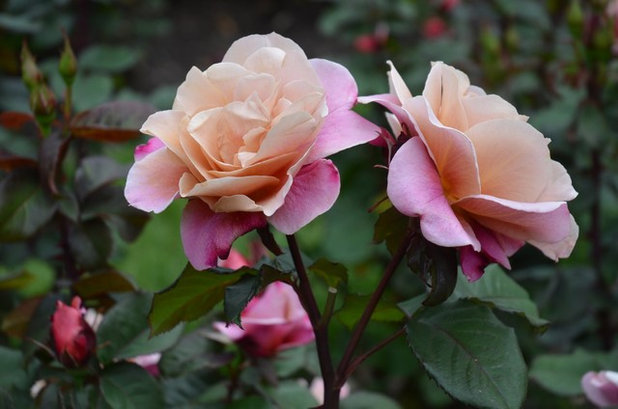
Noelle Johnson Landscape Consulting
Winter is a great time to start deciding what type of rose to add to your garden, as bare-root roses started appearing in nurseries in late December for those who live in USDA zones 8 to 10 (find your zone) and will show up in early spring in colder zones.
Shown: ‘Distant Drums’ floribunda rose at the International Rose Test Garden in Portland, Oregon
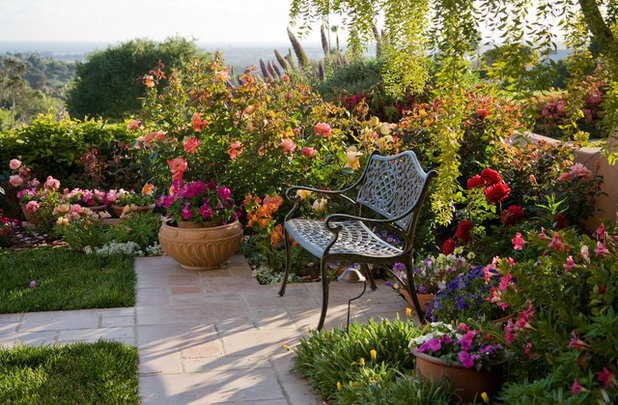
When beginning your search for the perfect rose for your garden, ask yourself what’s most important to you: masses of smaller blooms or fewer large blossoms? Maybe you are tight on space or are looking for a rose that needs little upkeep? There are many smaller, low-maintenance types of roses to fit the bill. Is a rose that’s highly fragrant essential on your wish list? Old garden roses are well-known for their fragrance as are certain modern roses.
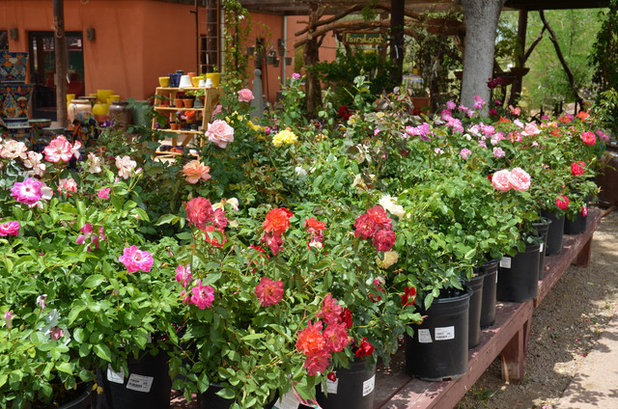
Noelle Johnson Landscape Consulting
The American Rose Society recognizes more than 35 classes of roses, and we’ll take a look at several popular ones.
There are three groups of roses:
old garden,
modern and
species. The majority of roses are hardy to zones 4 and above, with some exceptions.
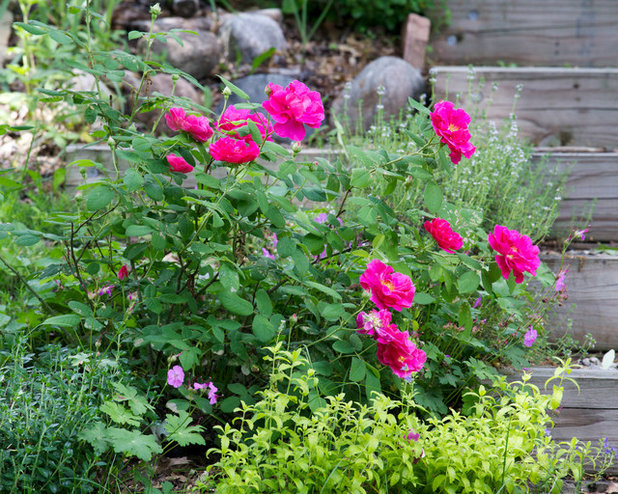 Old Garden Roses
Old Garden RosesThis historic group is made up of several classes, including alba, Bourbon, centifolia, China, damask, Gallica, hybrid perpetual and noisette — many dating from the late 1700s, when roses were brought to Europe from China. This group of roses includes the predecessors of modern classes of roses, such as hybrid tea, floribunda and modern shrub roses.
The fragrance of old garden roses is unmatched, and they possess old-fashioned form and beauty. Extremely vigorous compared with many of today’s modern roses, they’re also more resistant to fungal diseases, such as black spot, making them a great choice for those who want more of a low-maintenance rose.
Many old garden roses bloom once a year in spring to early summer, although some repeat blooming throughout the growing season.
The growth habit of old garden roses makes them perfect for use as hedges or large shrubs, or they can be allowed to climb up walls, a pergola or arch. Pastel colors of cream, pink and peach are largely favored by this group of roses.
Shown: Apothecary’s rose (
Rosa gallica officinalis)
Photo by Dawn Huczek
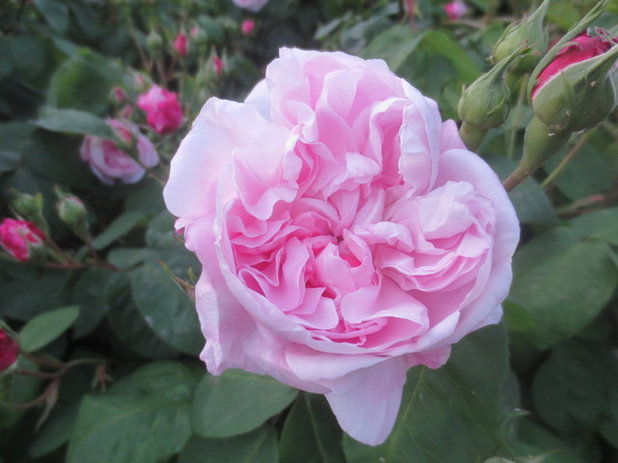
Here are few types of old garden roses worth adding to your garden:
Centifolia. Known as the cabbage rose, these roses are famous for their intense fragrance and iconic flower, with a circular base and flat top bursting with more than 100 petals. Blooming once a year in late spring, they range in color from white to purple and can grow extremely tall, depending on the variety, making them suitable for using as shrubs or climbing roses.
‘Fantin-Latour’ is a popular variety that reaches 3 to 5 feet tall and produces pale pink flowers. It’s hardy to zone 4.
Shown: ‘Fantin Latour’ centifolia rose
Photo by Arnaud 25
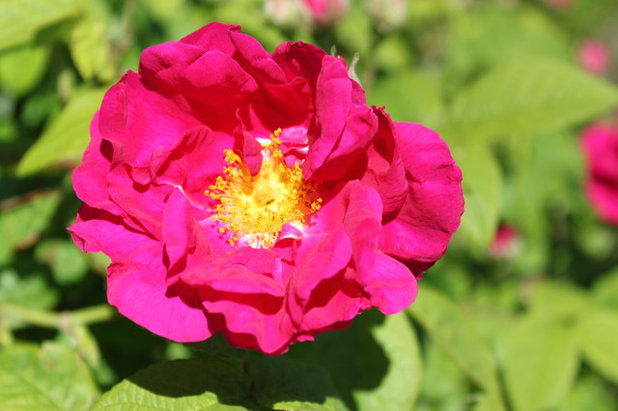 Gallica
Gallica. Records of this rose being grown in gardens can be found as far back as the 12th century. Blooming once a year, they range from pink to red, and certain types sport colored stripes. Their simple beauty makes an unforgettable impression, along with their intense fragrance. The number of petals in their flowers can vary from 18 to 40, depending on the species. Their relatively smaller size (3 feet and up) and dense growth habit make them a great choice for using as a hedge. On an interesting historic note, Napoleon’s wife, Josephine, grew Gallica roses in her French garden.
Rosa gallica officinalis, known as apothecary’s rose, is a beautiful variety with dark pink 18-petaled flowers that reach up to 4 inches across. It grows best in zones 4 to 8.
Shown: Apothecary’s rose
Photo by Col Ford and Natasha de Vere
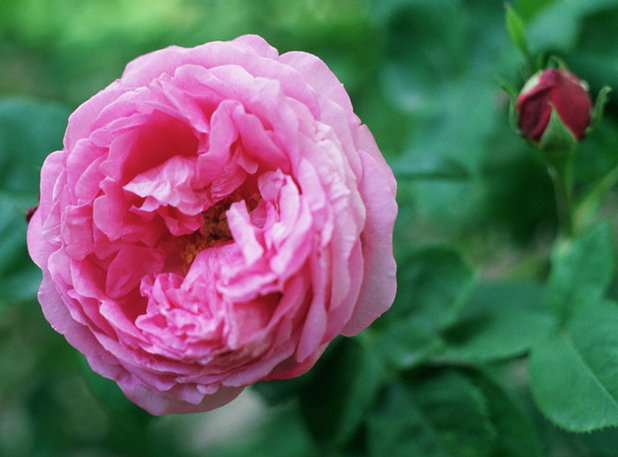 Hybrid perpetual.
Hybrid perpetual. This class of old garden rose was highly prized during the Victorian era for its ability to bloom repeatedly throughout the year. Fragrant flowers with 40 or more petals range from medium pink to red in color.
The variety ‘La Reine’ has lovely dark pink petals with shades of lilac. It’s hardy to zone 5 and grows 4 to 6 feet tall, making it a great choice for a backdrop or large hedge.
Shown: ‘La Reine’ hybrid perpetual rose
Photo by A. Barra
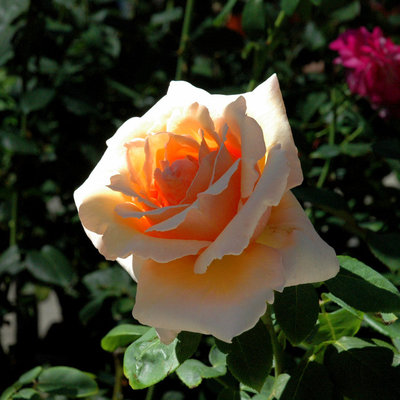
Noelle Johnson Landscape Consulting
Modern Garden RosesWhen people think of roses, modern roses are usually what come to mind, especially hybrid tea roses, with their elegant upright blooms and larger petals. Modern garden roses are those introduced after 1867, many created using old garden roses. The vast majority are repeat-blooming but vary in shape, fragrance, size and growth habit.
Modern garden roses, when compared with old garden counterparts, can be slightly more susceptible to disease and insect damage. The amount of fragrance can also vary from strong to nonexistent, depending on the variety.
The cold hardiness of modern roses can vary, depending on the class and variety. In general, zones 4 and up are suitable for growing most types of roses, but several can grow in colder zones.
Besides hybrid tea roses, other popular classes of modern garden roses include floribundas, grandifloras, climbing roses, shrub roses, ground cover roses and miniature roses.
Shown: ‘Medallion’ hybrid tea rose
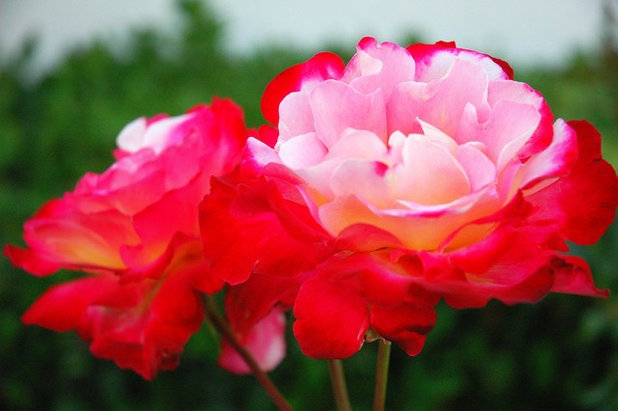
Noelle Johnson Landscape Consulting
Hybrid tea. Considered a breakthrough in rose breeding, the first hybrid tea rose was created in 1867 by crossing China and hybrid perpetual old garden roses. The resulting plants had large, upright flowers rising above rather open shrubs ranging from 3 to 6 feet tall. Rose blooms typically occur one to a stem. The variety of colors is almost limitless, with only blue-colored flowers absent.
Shown: ‘Double Delight’ hybrid tea rose
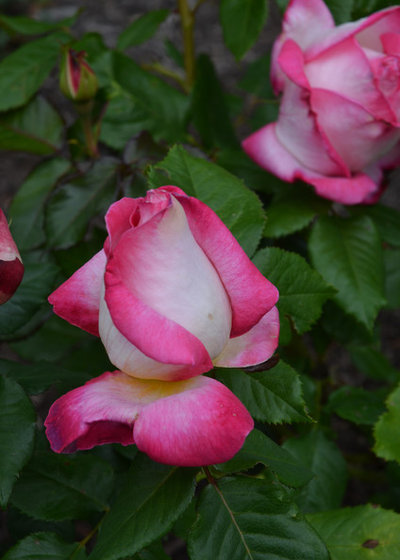
Noelle Johnson Landscape Consulting
The fragrance of hybrid tea rose ranges from strong to faint, depending on the variety. Highly fragrant varieties include ‘Double Delight’, ‘Fragrant Cloud’ and ‘Mister Lincoln’.
In the landscape, place hybrid tea roses near walkways, windows or entries, where their stunning flowers can best be viewed and their fragrance enjoyed.
With so many to choose from, it’s almost impossible to select a favorite hybrid tea rose, and depending on whom you ask, you’ll get a different answer. In addition to the highly fragrant varieties mentioned earlier, ‘Bewitched’, ‘Chicago Peace’, ‘Pristine’ and ‘Touch of Class’ are my favorites.
Shown: ‘California Dreamin’’ hybrid tea rose
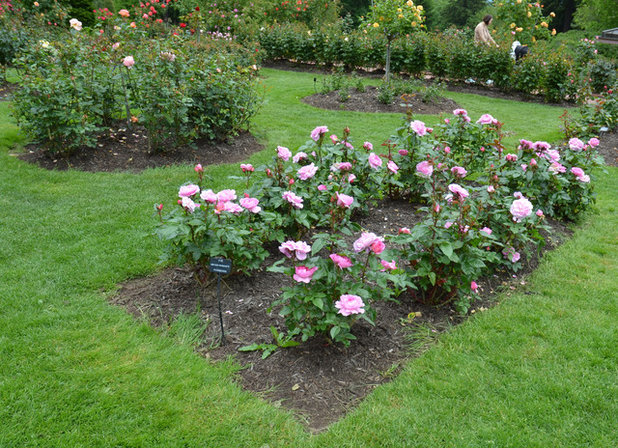
Noelle Johnson Landscape Consulting
Floribunda. At first glance, floribunda roses look very similar to hybrid teas in regard to their flower shape, foliage and colorful variety. Floribunda roses are a cross between hybrid tea and polyantha roses (a compact old garden rose), and are more compact in size and slightly more disease-resistant than their hybrid tea parents.
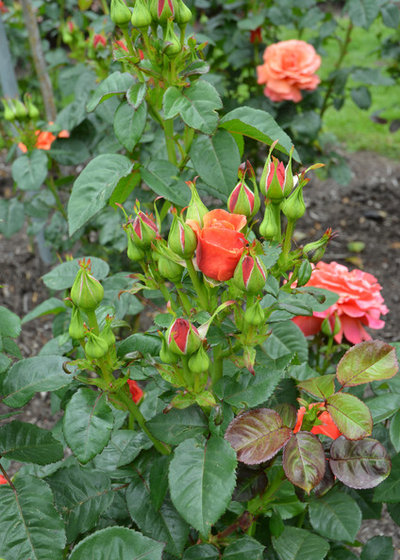
Noelle Johnson Landscape Consulting
Multiple blooms are produced in clusters at the end of each stem, resulting in slightly smaller flowers than hybrid tea roses. Because of their compact growth habit, the bushes themselves are denser than hybrid tea roses and therefore somewhat more attractive.
Shown: ‘Easy Does It’ floribunda rose
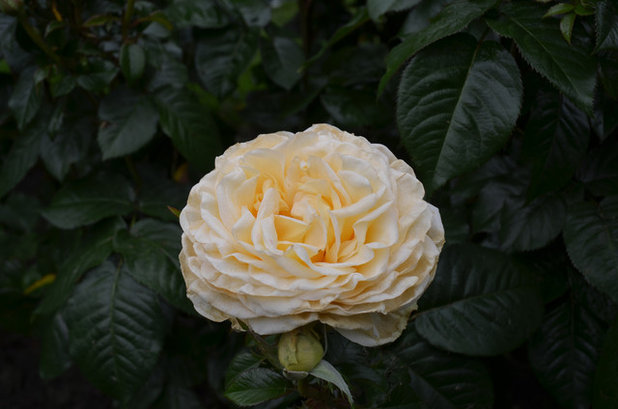
Noelle Johnson Landscape Consulting
Averaging 3 feet tall, floribunda roses are a great choice for a small garden bed, informal hedge, erosion control or planted in a container, in addition to being used in much the same way you would use hybrid tea roses.
‘Amber Queen’, ‘Monkey Business’ and ‘Sexy Rexy’ are popular choices.
Shown: ‘Monkey Business’ floribunda rose
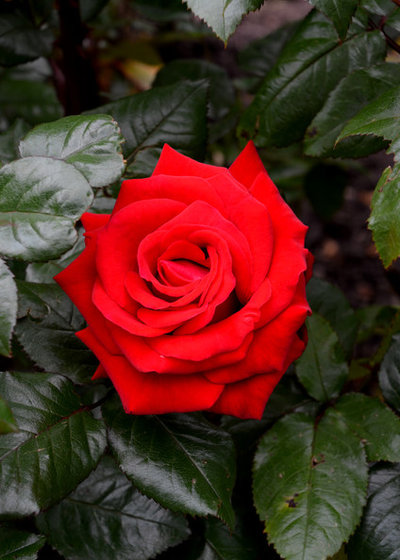
Noelle Johnson Landscape Consulting
Grandiflora. What do you get when you take the best traits of hybrid tea and floribunda roses?
Grandiflora roses have inherited the beautiful blooms of hybrid teas, but they’re often produced in clusters like floribundas. They tend to be taller than hybrid teas, averaging 6 to 7 feet, making them suitable for screening or planting against a wall.
‘Queen Elizabeth’, with its pretty pink flowers, is the most famous grandiflora rose, although ‘Fame’ and ‘Gold Medal’ are certainly worth planting as well.
Shown: ‘Crimson Bouquet’ grandiflora rose
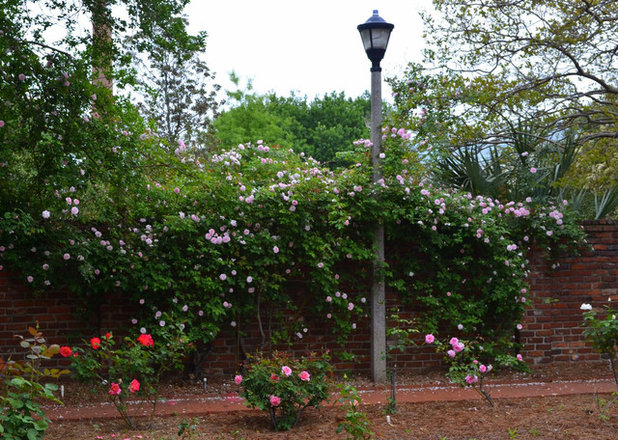
Noelle Johnson Landscape Consulting
Climbing roses. Climbers can be found in several classes of roses and are often the result of an alteration or mutation of the normal shrub growth, creating canes (branches) that reach 8 to 20 feet long. Their canes are also more flexible than those found on rose bushes, allowing them to be trained on supports, such as a trellis.
While climbing roses may grow significantly taller than the original rose they mutated from, the flower itself is identical.
Shown: Pink climbing rose at the University of South Carolina
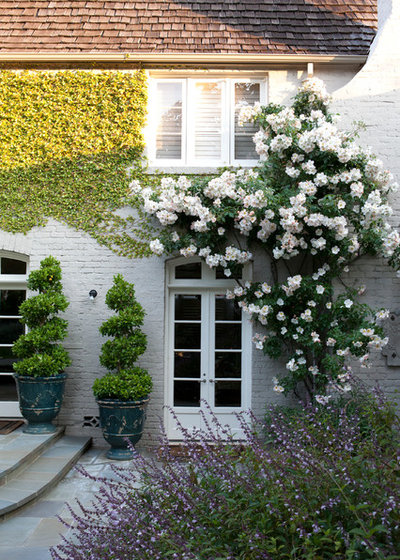
Design Focus International
Unlike vines, climbing roses don’t have tendrils to help them grab onto structures for support, so tying the canes to supports with flexible plant ties or strips of pantyhose is necessary.
Use climbing roses to cover a bare fence or wall, or plant them alongside an arch or pergola where their beauty can best be appreciated.
‘Altissimo’, ‘New Dawn’ and ‘Sally Holmes’ are often planted where climbing roses are desired.
Shown: ‘Sally Holmes’ climbing rose
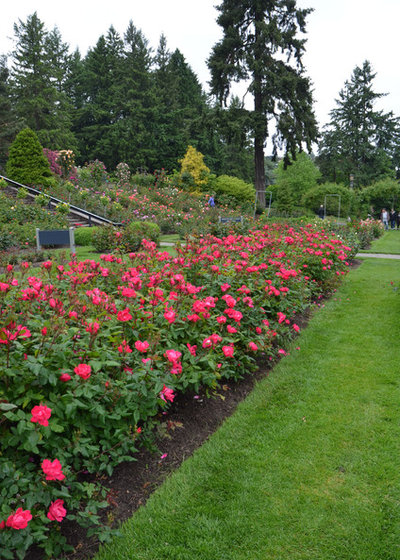
Noelle Johnson Landscape Consulting
Shrub roses. This rather broad category is described by the American Rose Society as “hardy, easy-care plants that encompass bushy roses that do not fit in any other category of rose bush.”
In general, shrub roses have denser foliage and a rounder form than many modern roses, which have more of a V-shape growth habit. Even though the foliage of shrub roses is very attractive and stands on its own, the profuse flowers almost hide the foliage throughout the growing season of spring through fall. The fragrance of shrub roses ranges from scarce to heavy, depending on the type.
Shown: ‘Pink Double Knock Out’ shrub roses at the International Rose Test Garden in Portland, Oregon
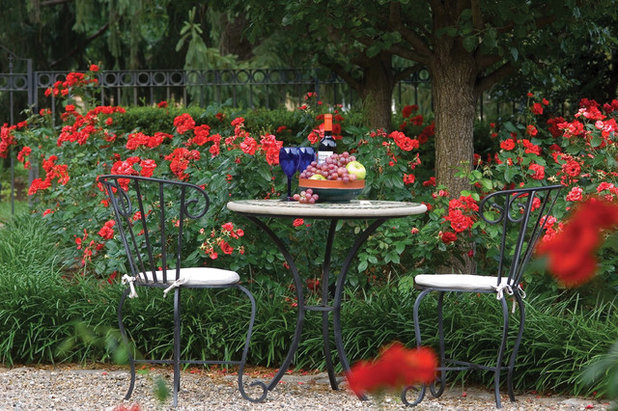
Wallace Landscape Associates
The most notable characteristic of shrub roses is their disease resistance and few maintenance requirements, compared with other modern roses. Most are self-cleaning, meaning that no deadheading of spent rose blooms is needed, unlike many other rose types.
Today, many rose breeders have turned to creating beautiful, low-maintenance shrub roses using the best characteristics of modern and old garden roses. ‘Knock Out’ and the Meidiland roses are just a few of the varieties of shrub roses that have become popular additions to the garden.
Shown: ‘Red Meidiland’ shrub roses
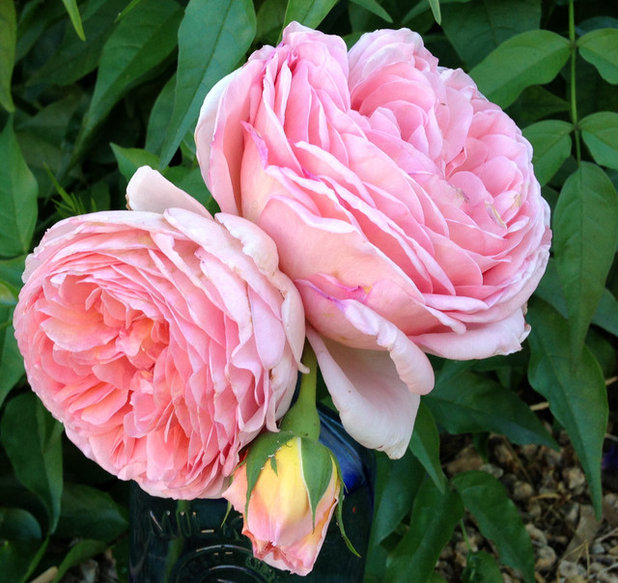
Noelle Johnson Landscape Consulting
Austin roses. No discussion about shrub roses can be made without talking about arguably the most popular type of shrub rose: those created by rose breeder David Austin, which are often listed separately in a class of their own.
Nicknamed “Austin roses” or “English roses,” these were created from old garden roses and modern roses. Many varieties have the classic, old-fashioned cabbage rose appearance of old garden roses, along with their intense fragrance. From their modern parentage they get their ability to flower repeatedly.
Shown: ‘Abraham Darby’ Austin rose from the author’s garden
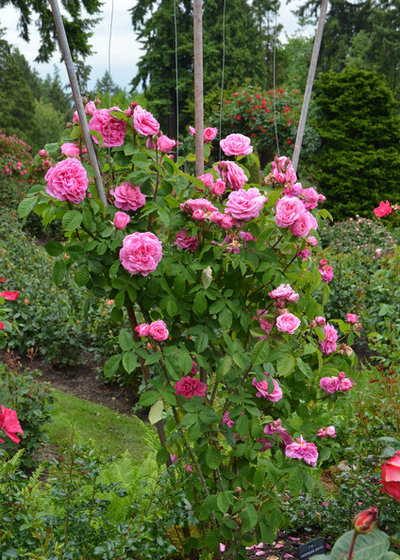
Noelle Johnson Landscape Consulting
Austin roses aren’t as cold-hardy or disease-resistant as old garden roses and many other shrub roses. They’re recommended for zones 5 and up.
Popular Austin roses include ‘Abraham Darby’, ‘Gertrude Jekyll’, ‘Glamis Castle’ and ‘Graham Thomas’. Some are also available as climbing roses.
Shown: ‘Gertrude Jekyll’ Austin rose
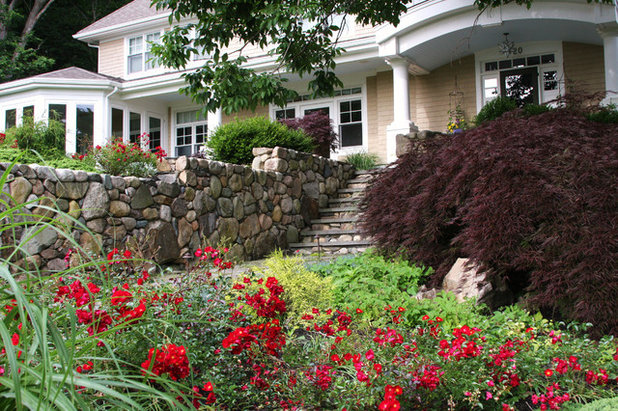
Amy Martin Landscape Design
Ground cover roses. A newer class of roses consists of those that grow low to the ground and act as a ground cover in the garden. Like shrub roses, they bloom profusely, are disease-resistant and need relatively little maintenance compared with other modern roses.
They’re best used wherever ground covers are desired, including along slopes, trailing over a raised garden bed or in containers where their blossoms can spill. Their relatively short size, 1½ to 2 feet tall, makes them a great choice for borders too.
Popular types include ‘Drift’ and ‘Flower Carpet’ roses.
Shown: ‘Red Flower Carpet’ ground cover roses
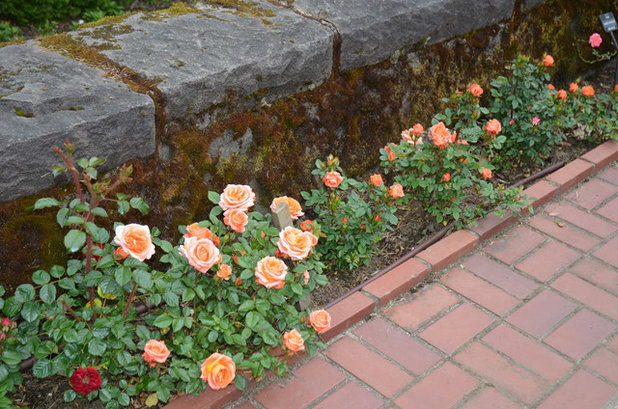
Noelle Johnson Landscape Consulting
Miniature roses. Miniature roses are the perfect way to enjoy the benefits of growing roses in limited space, albeit on a smaller scale. These small beauties descend from miniature China roses and typically range from 1 to 2 feet tall. Except for their smaller size, miniature roses possess the same iconic hybrid tea rose shape and are available in a large variety of colors.
They fit where larger roses don’t: window boxes, hanging baskets and narrow garden beds. They can also be grown as houseplants. However, don’t plant miniature roses if you want the pleasing fragrance of roses to perfume the air since they have little scent.
‘Amber Star’, ‘Bridal Sunblaze’, ‘Rainbow’s End’ and ‘Salmon Sunblaze’ are fun choices to grow.
Shown: ‘Amber Star’ miniature roses at the International Rose Test Garden in Portland, Oregon
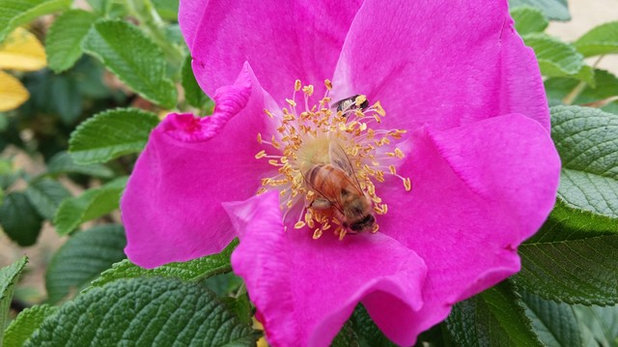
High Tech Turf & Trees
Species RosesOften overlooked, wild, or species, roses have been growing without any help from humans for thousands of years. There are more than 100 rose species native to North America, Europe and Asia.
Species roses range from climbing roses to shrubs, depending on the particular species, and possess a delicate beauty with their five-petaled flowers. Pink, red, white or yellow blooms appear once a year in early summer; most are highly fragrant.
Shown: Beach rose (
Rosa rugosa)
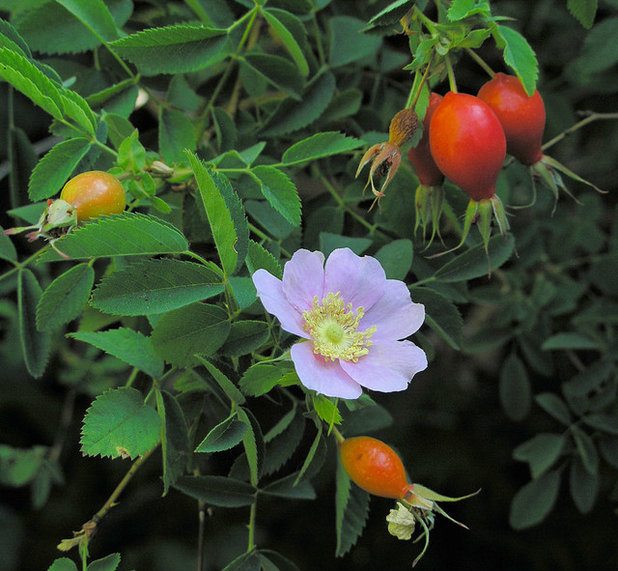
Colorful rose hips form once flowering ends. While this fruit from pollinated rose blooms can appear on any rose type, rose hips aren’t usually seen on many modern rose classes since spent roses are frequently pruned to promote additional flowering. With roses that bloom once a year, like species roses, allowing rose hips to form doesn’t affect flowering and adds a bright spot of red autumn color to the garden. They are also a welcome food source for birds and other animals in winter.
Shown: California rose (
Rosa californica) with rose hips
Photo by PKM
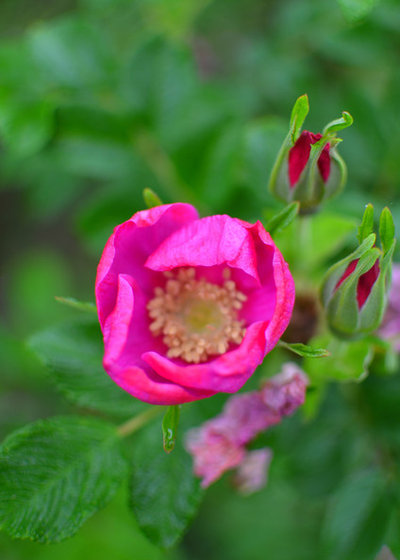
Amy Renea
Most species roses make great informal hedges in the background of landscapes where they have plenty of room to grow.
These wild roses are truly fuss-free, needing little maintenance other than pruning while dormant. They are exceptionally disease-resistant and need no deadheading.
Shown: Beach rose
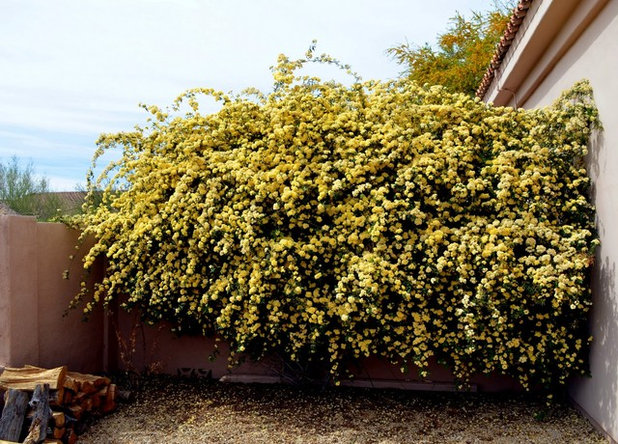
Noelle Johnson Landscape Consulting
When selecting a species rose for your garden, look at what roses may be native to your region (or from an area that has a similar climate). Swamp rose (
Rosa palustris)
, Carolina rose (
R. carolina),
prairie rose (
R. blanda) and California rose (
R. californica) are all native to North America.
Lady Banks’ rose (
R. banksiae) is a species rose from China that has already become a favorite in zones 6 and above. This thornless beauty produces white or yellow flowers in spring or early summer. Unlike many other species roses, Lady Banks’ roses have a double, or full, shape. They have a light violet fragrance and grow 5 to 15 feet tall.
Shown: Lady Banks’ rose in full bloom
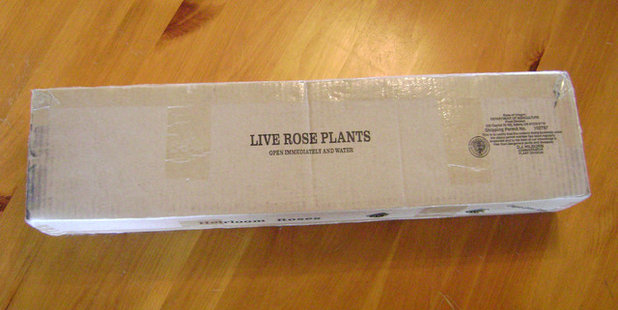
Noelle Johnson Landscape Consulting
With this overview of old, modern and species roses, I hope you have a good idea of what types of roses will best fit your garden while fulfilling your desire for beauty and fragrance. Your local rose society can be an invaluable resource in helping you find roses that will do well in your climate, especially if you live in zones 4 and below.
While you can find many modern roses, such as floribundas and hybrid teas, at your local nursery, other types may be harder to find. Thankfully, rose growers allow you to order most types of roses by mail. Many have informative websites complete with colorful photos and plant profiles of each rose they offer to help you in your decision to choose the perfect rose for your outdoor space.
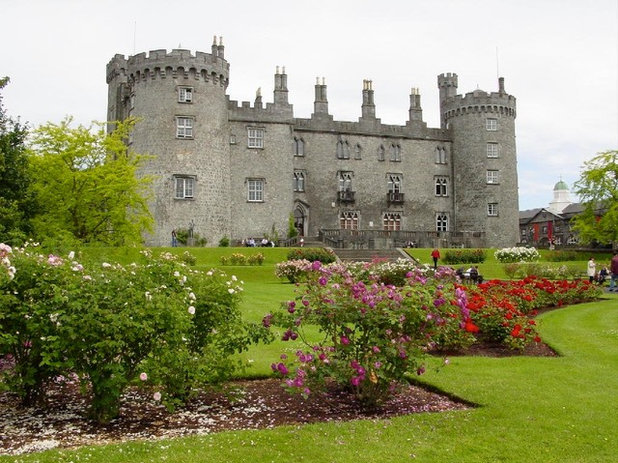
Noelle Johnson Landscape Consulting
Shown: Rose garden at Kilkenny Castle in Kilkenny, Ireland





